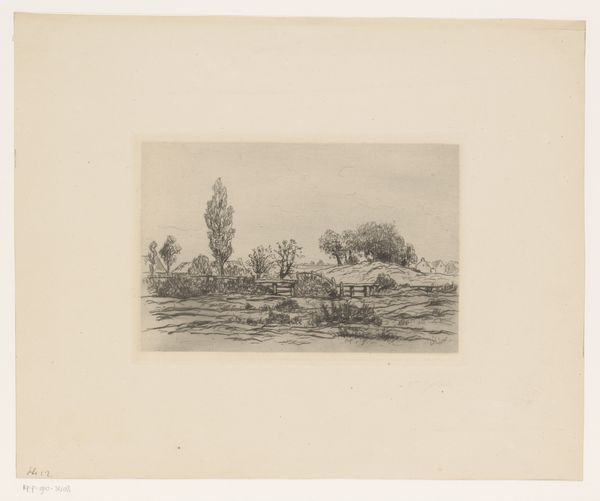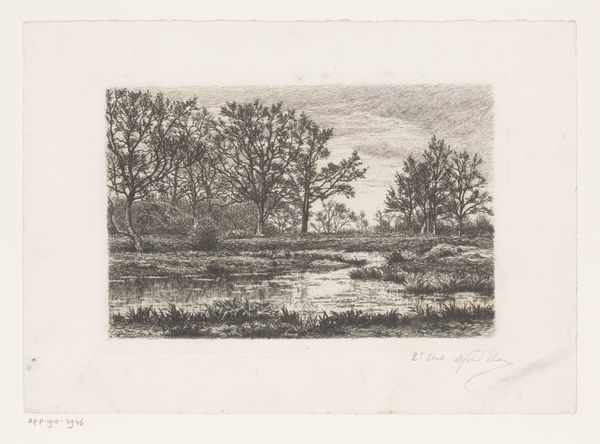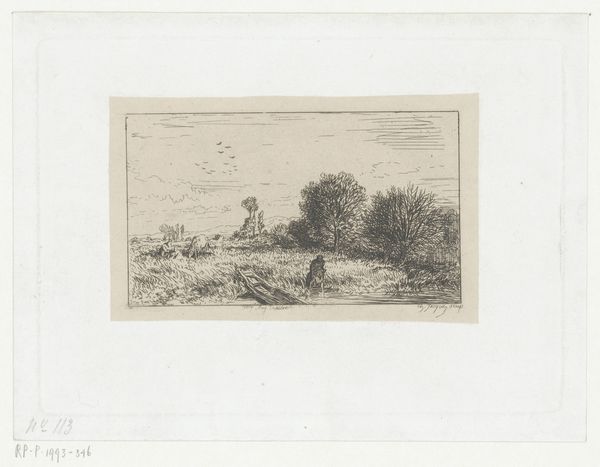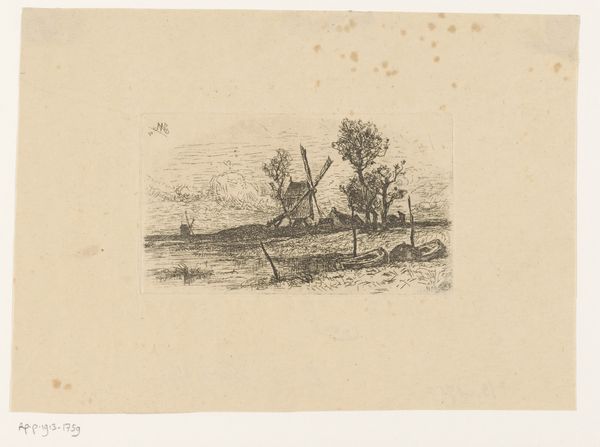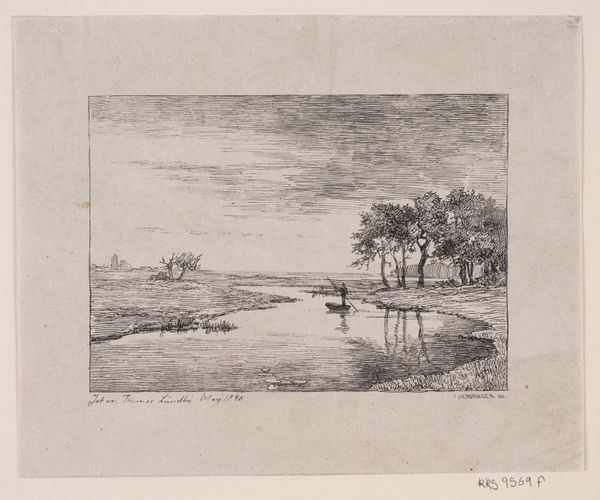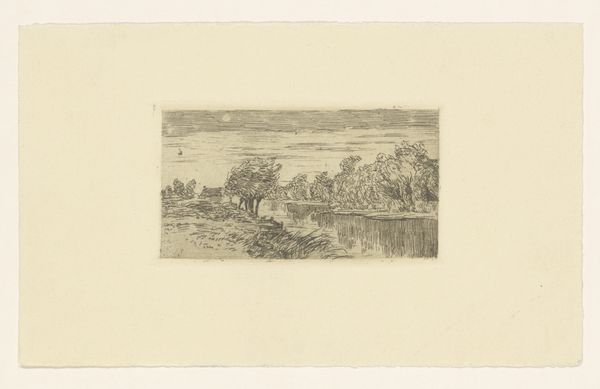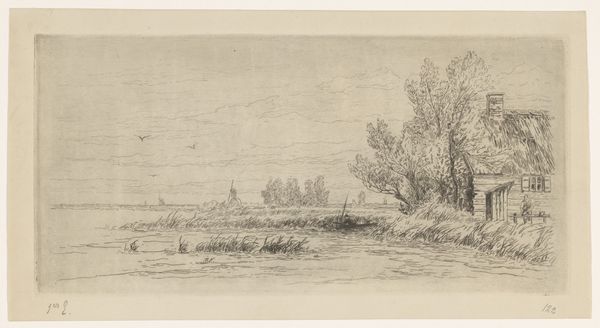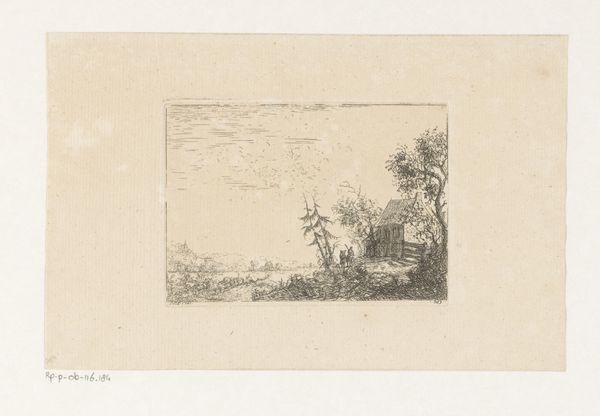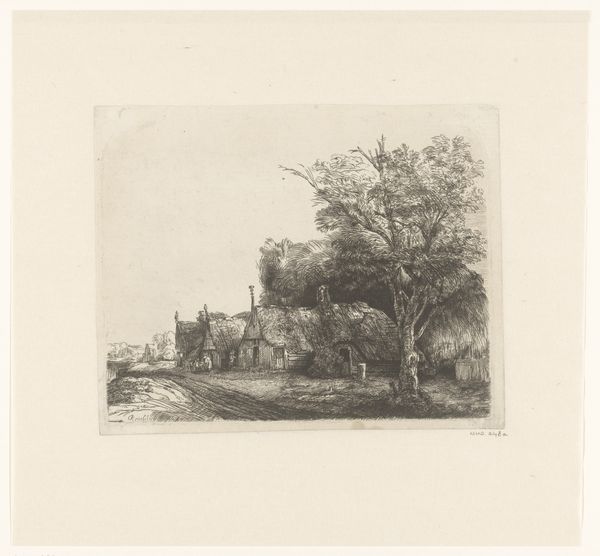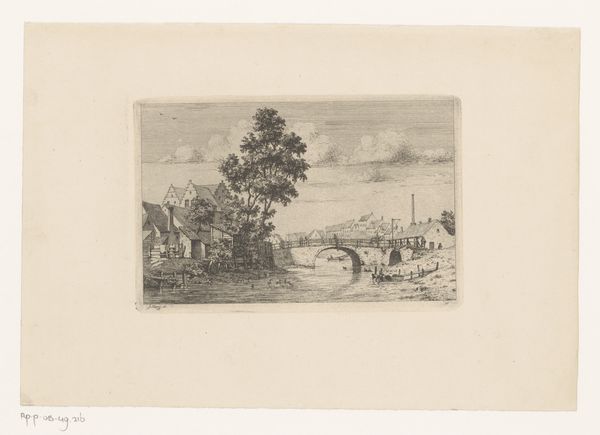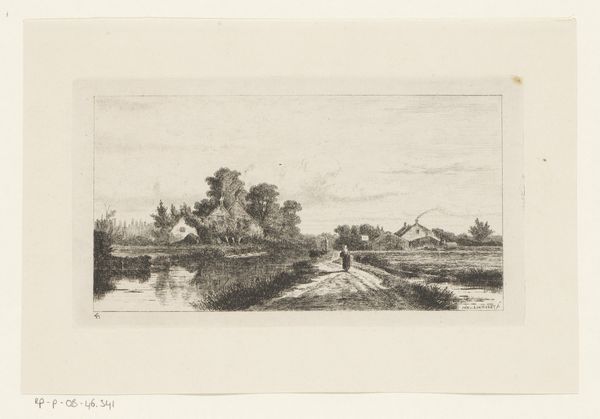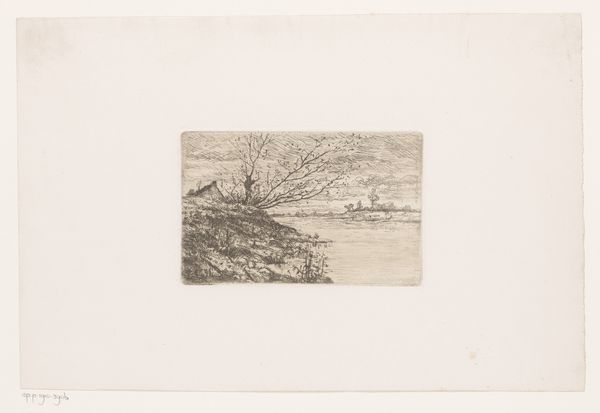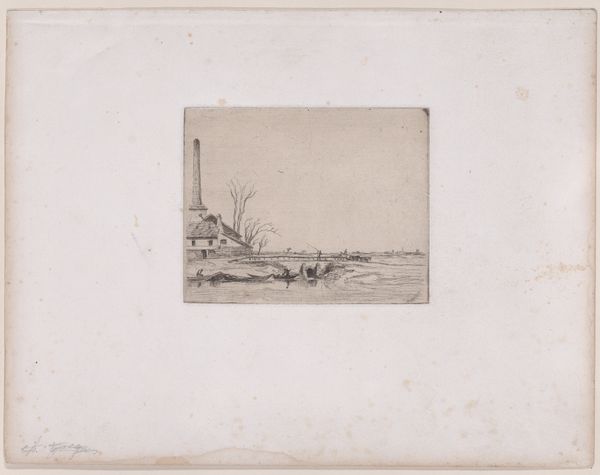
print, engraving
# print
#
landscape
#
genre-painting
#
engraving
#
realism
Dimensions: height 270 mm, width 360 mm
Copyright: Rijks Museum: Open Domain
Adolf Carel Nunnink made this print of a drinking cow using a technique called etching. The artist would have coated a metal plate with wax, then scratched an image into the wax with a needle, exposing the metal underneath. The plate was then immersed in acid, which bit into the exposed lines. The longer the plate was left in the acid, the deeper the lines became, influencing the darkness of the printed image. Once the etching was complete, the plate was inked and pressed onto paper, transferring the image. This technique allowed for detailed and subtle tonal variations, seen here in the reflection of the cow in the water. Etching was often used to reproduce paintings, making art more accessible. The labor-intensive process of creating the etching plate stands in contrast to the mass production of prints, highlighting the relationship between craft and industry in the dissemination of art.
Comments
No comments
Be the first to comment and join the conversation on the ultimate creative platform.
